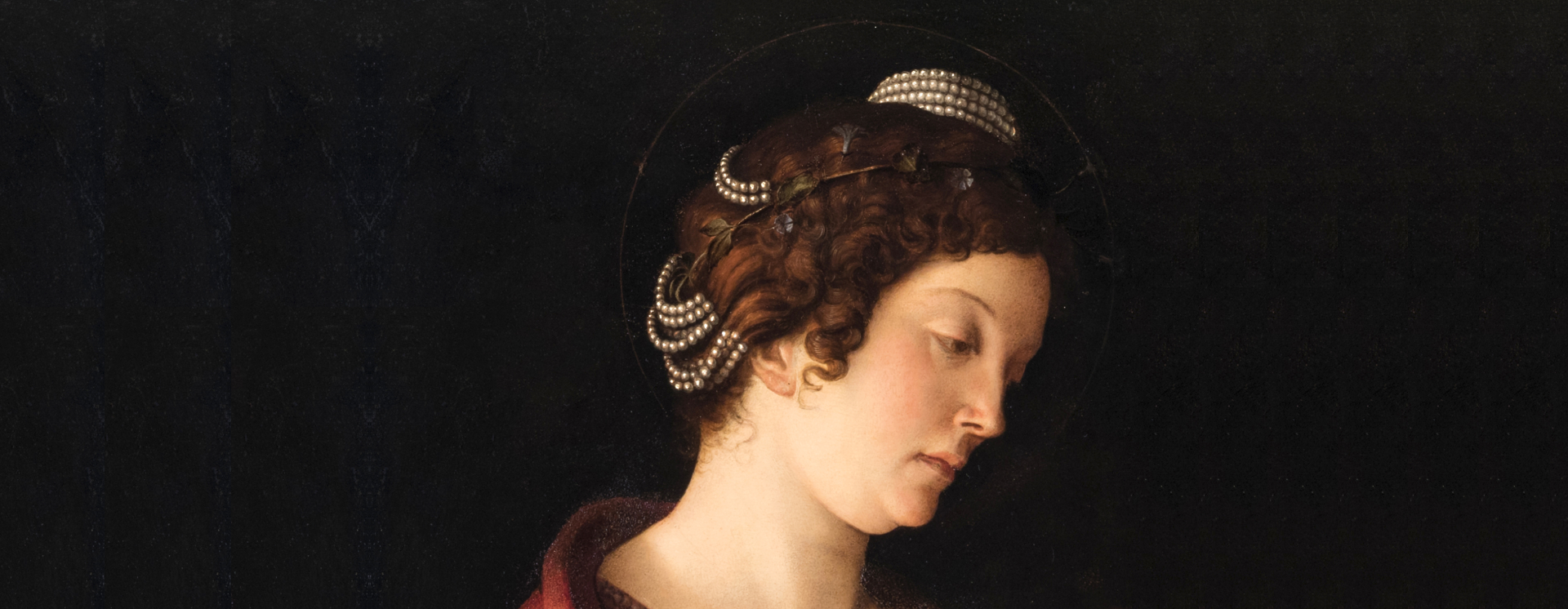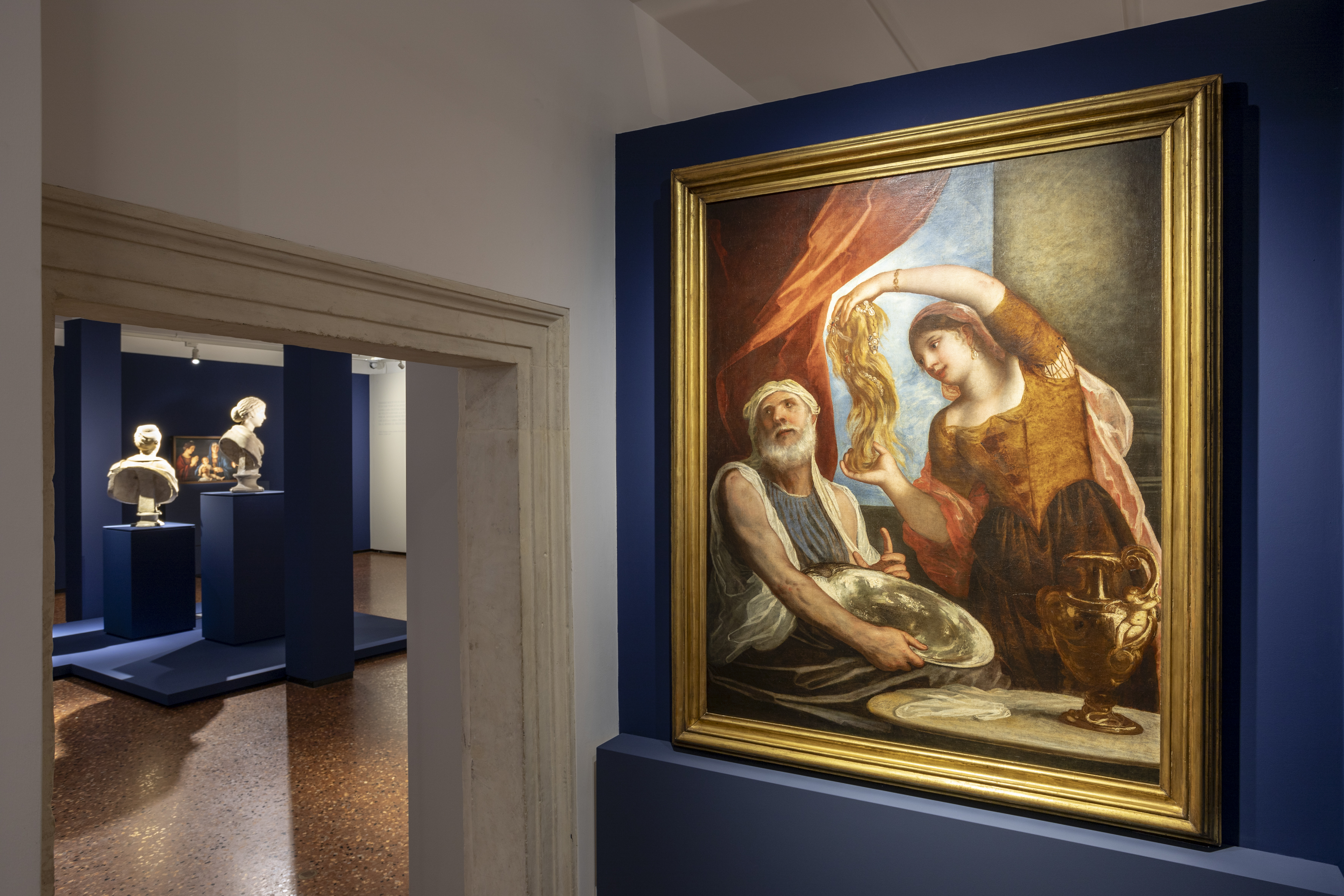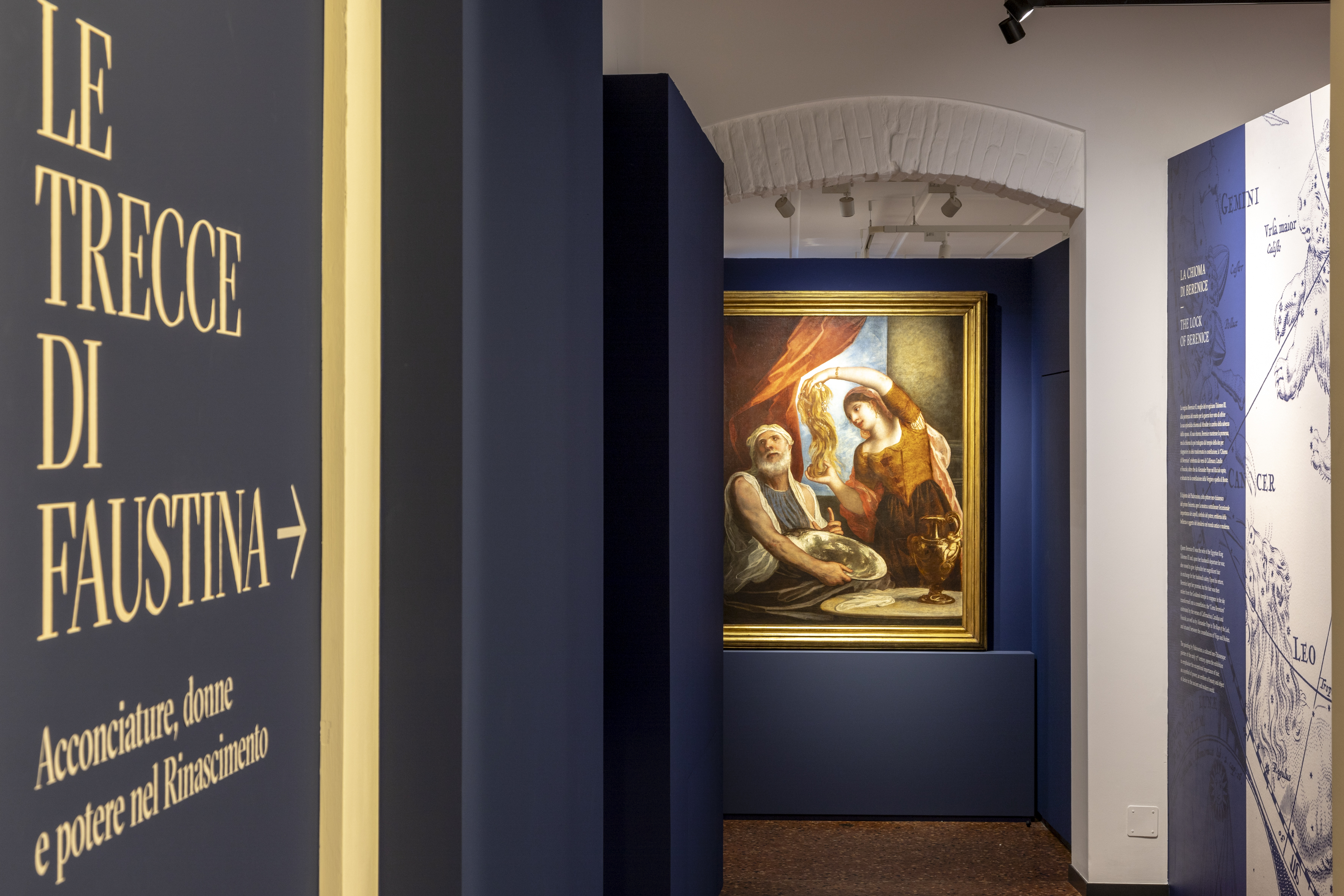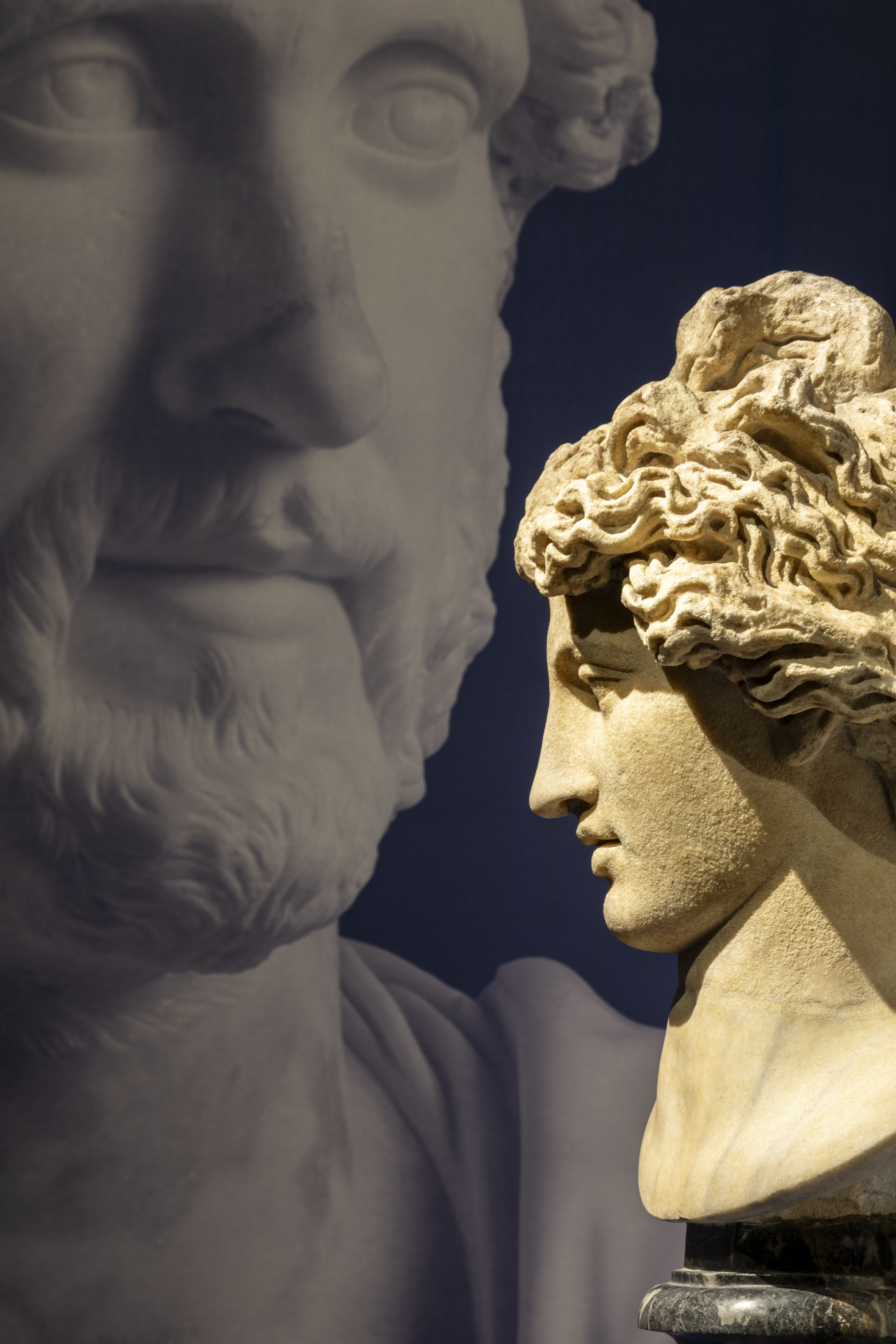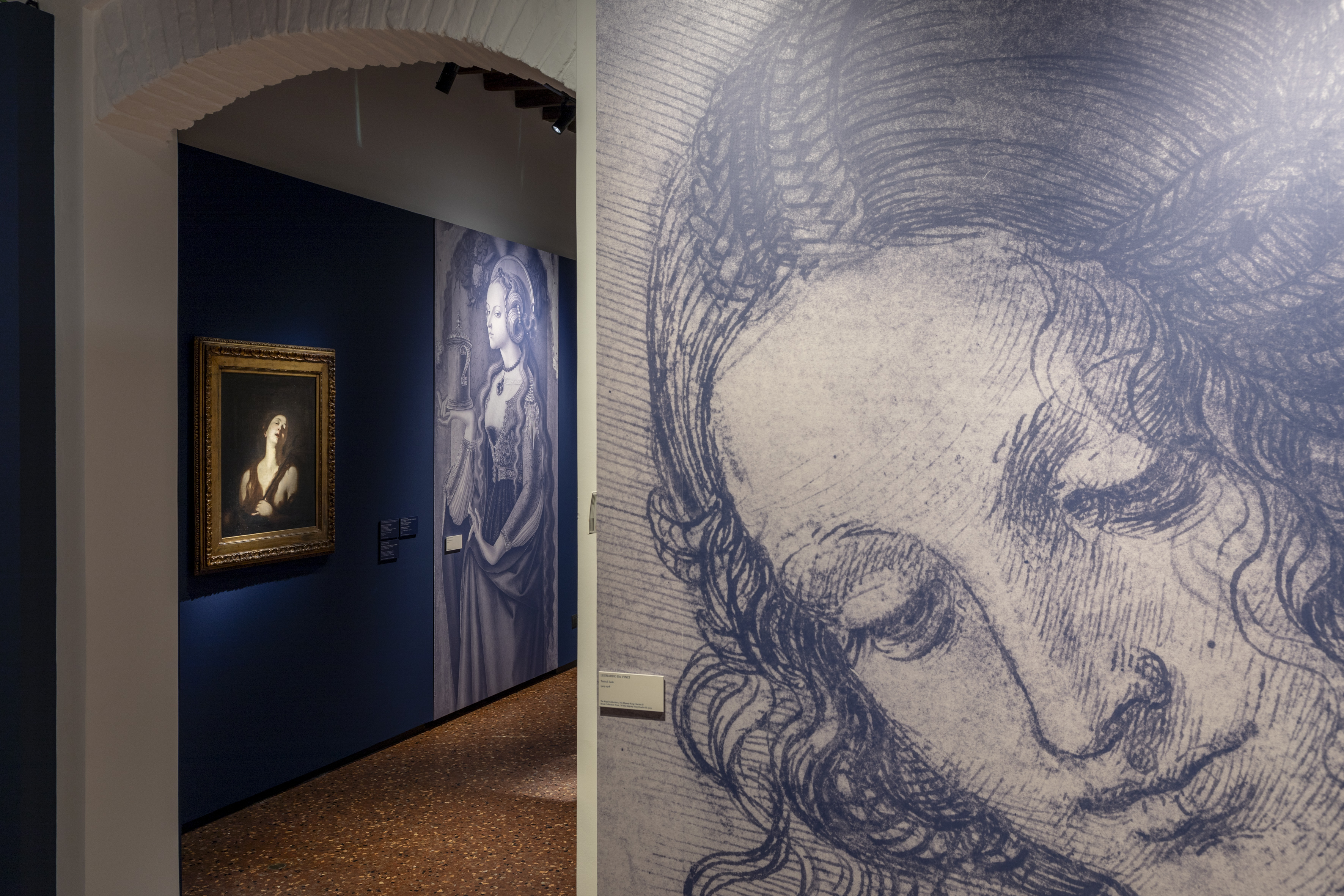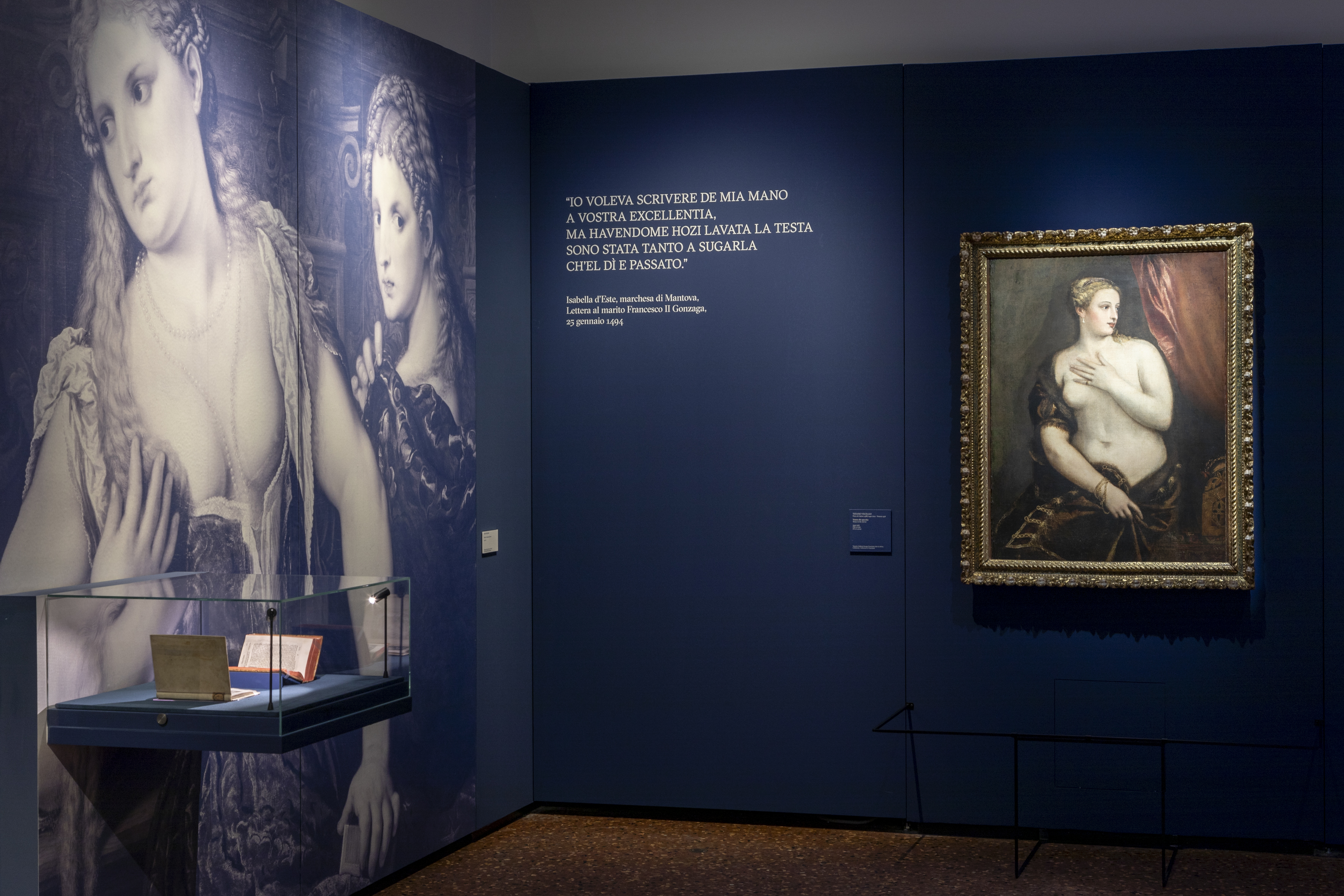FAUSTINA'S BRAIDS. Hairstyles, women and power in the Renaissance.
Gallerie d'Italia - Vicenza
From December 14 2023, to April 7 2024
Tuesday to Sunday from 10.00 to 18.00
Monday closed
Last entry 30 minutes before closing
Full price: €5.00; reduced price: €3.00. Free admission for pass holders, schools, under-18s, Intesa Sanpaolo Group customers
The holders of the ticket for the exhibition "Pop/Beat ITALIA 1960 – 1979. LIBERI DI SOGNARE" at Basilica Palladiana, will have access to the Gallerie d'Italia - Vicenza, until 7 April 2024, with reduced ticket price.
Displaying works by the masters BELLINI, MICHELANGELO, TIZIANO
For the first time, the exhibition takes a monographic look at a fundamental aspect of Renaissance art, culture, society and antiquarian studies: women's hairstyles. Through a wide-ranging selection of works, from imperial and Renaissance busts to paintings and sculptures, from ancient coins and modern medals to drawings and printed volumes (with a final neoclassical appendix), an attempt will be made to reconstruct the fascinating and complex world of hair styles in the 15th and 16th centuries, the artistic possibilities they offered and their importance in Italian society and fashion.
The title refers to one of the most spectacular and famous hairstyles, that of the Empress Faustina Major, wife of Antoninus Pius, who became a symbol of harmony and conjugal love. Her bust, found in the most famous Renaissance antiquarian collections, both by artists such as Lorenzo Ghiberti and Andrea Mantegna, and by patrons such as Lorenzo the Magnificent and Isabella d'Este, became a celebrated artistic model and numerous copies and re-elaborations lent great visibility to the eccentric hairstyle that ended up being adopted by many women, especially in the Veneto region.
The itinerary runs through eight rooms. After a prologue dedicated to the “lock of Berenice”, the first room looks at the rediscovery of the portrait of Faustina Major and her rather particular hairstyle: a portrait and a hairstyle that interested many great 15th century artists (Lorenzo Ghiberti, Filarete, Andrea Mantegna, Giovanni Bellini). The second room offers an overview of the history of the female portrait in Greek and Roman art, revealing the great variety of hairstyles chosen by women in ancient times. The third room shows the liberations of women’s hair, achieved in the 15th century. Partly thanks to the prestige of classical styles. The fourth room offers a dutiful and inevitable comparison with men's hairstyles, which, no less than women's, were the product of the recovery of classical models combined with more modern sensitivities. The fifth room looks at Michelangelo’s interest in the portrayal of women’s hair, examining drawings featuring “divine heads” and the invention of the Leda. The sixth room considers hairstyles as evidence of the new visibility of women in society and their ability to express codes of costume suited to very different contexts, from courts to brothels. The seventh room is dedicated to the attention paid by the world of film to women’s hairstyles, both ancient and modern. The eighth and final room documents how Faustina's hairstyle - the central theme of the exhibition - continued to exert great fascination even in the Neoclassical period, particularly in the portraiture of Antonio Canova.
The exhibition brings together a selection of portraits of leading Renaissance women, including Lucretia Borgia, Isabella d'Este and Eleonora da Toledo, and explores the expression of hairstyles in official portraiture, highlighting how women themselves used them to suggest cultural values and behavioural models.
At the same time, the exhibition aims to raise awareness of the material culture of the time in order to clarify the artists' contribution. Are the hairstyles we see in the paintings purely imaginary fantasies or precise representations of the fashion of the time? How did creativity manifest itself in everyday hairstyles through the use of wigs, hairpieces and invisible constructions? Can we speak of fact and fiction for Renaissance hairstyles, or are these two aspects inextricably linked?
At the end of the tour, visitors will not only have reflected on these aspects, but also rediscovered the surprising roles of hairstyles in the Renaissance. Far from being merely feminine cosmetic concerns or mere artist's curiosities, hairstyles should be considered the links of a “complete” culture, that of the Renaissance, in which moral, social, religious and physiological beliefs intertwined, mutually strengthening one another.
The exhibition is curated by Mauro Mussolin, Vincenzo Farinella and Howard Burns.
The exhibition is accompanied by a sensory journey between two olfactory identities, created using recipes found in ancient texts.
BALMS & WORKSHOPS
A subtle fragrance that evokes antiquity and transports you back in time. Lemon releases bright accents upon entry, accompanied by the resinous scents of elemi and the refreshing breeze of camphorated notes. The heart is soft and deep, with incense evoking an ancient spirituality, wrapped in the enveloping nuances of amber and the smouldering warmth of tonka bean. Storax resin and benzoin paint a mellifluous base melody, while oakmoss lends depth and a natural sensation. The fragrance tells of secrets buried in the mists of time, in the workshops of old herbalists and alchemists, places where perfume was a secret art, a jealously guarded legacy.
STORAX ROSE
The influence of antiquity in the neoclassical age: an intimate link between the glorious past and Renaissance aesthetics. The fragrance opens with whispers of black pepper and clove, a vibrant chord echoing a time long gone. Tobacco leaf creates an enveloping sensation, lending volume to the composition. In the heart, we encounter the floral sensuality of the damask rose, a tribute to the ethereal beauty that has inspired many works of art. Carnation in combination with cinnamon adds a touch of spicy warmth. Moving further down, Storax resin emerges with a dark elegance, weaving a sense of depth, while sensual ambergris and amber accords complete this olfactory symphony, conveying a sense of mysterious and enveloping charm.
